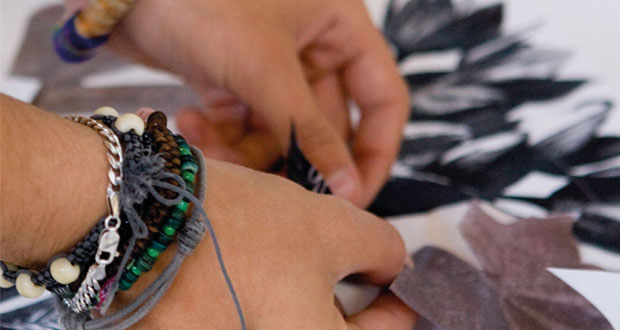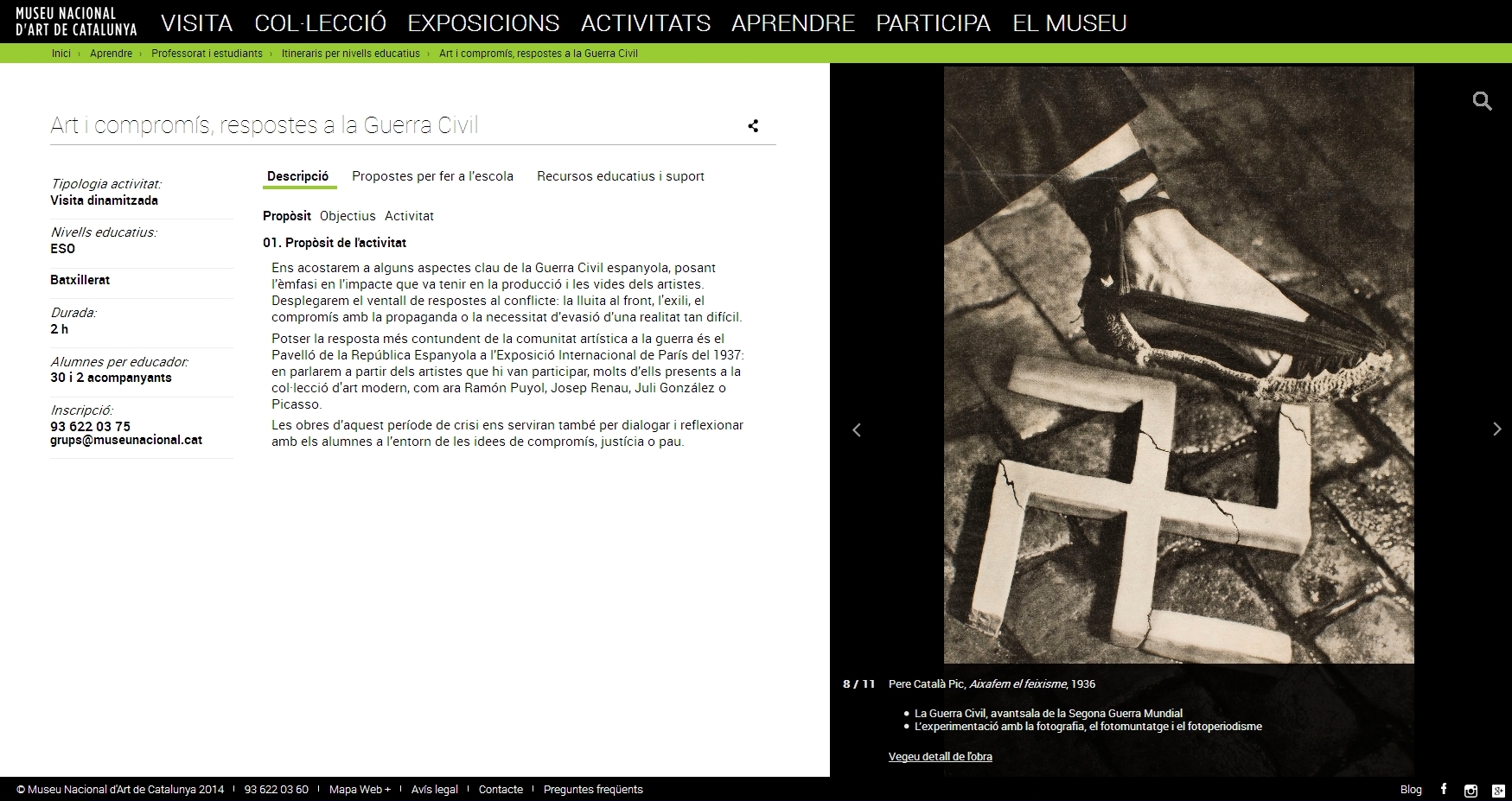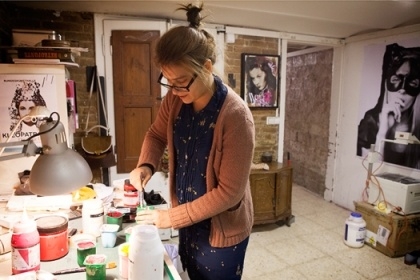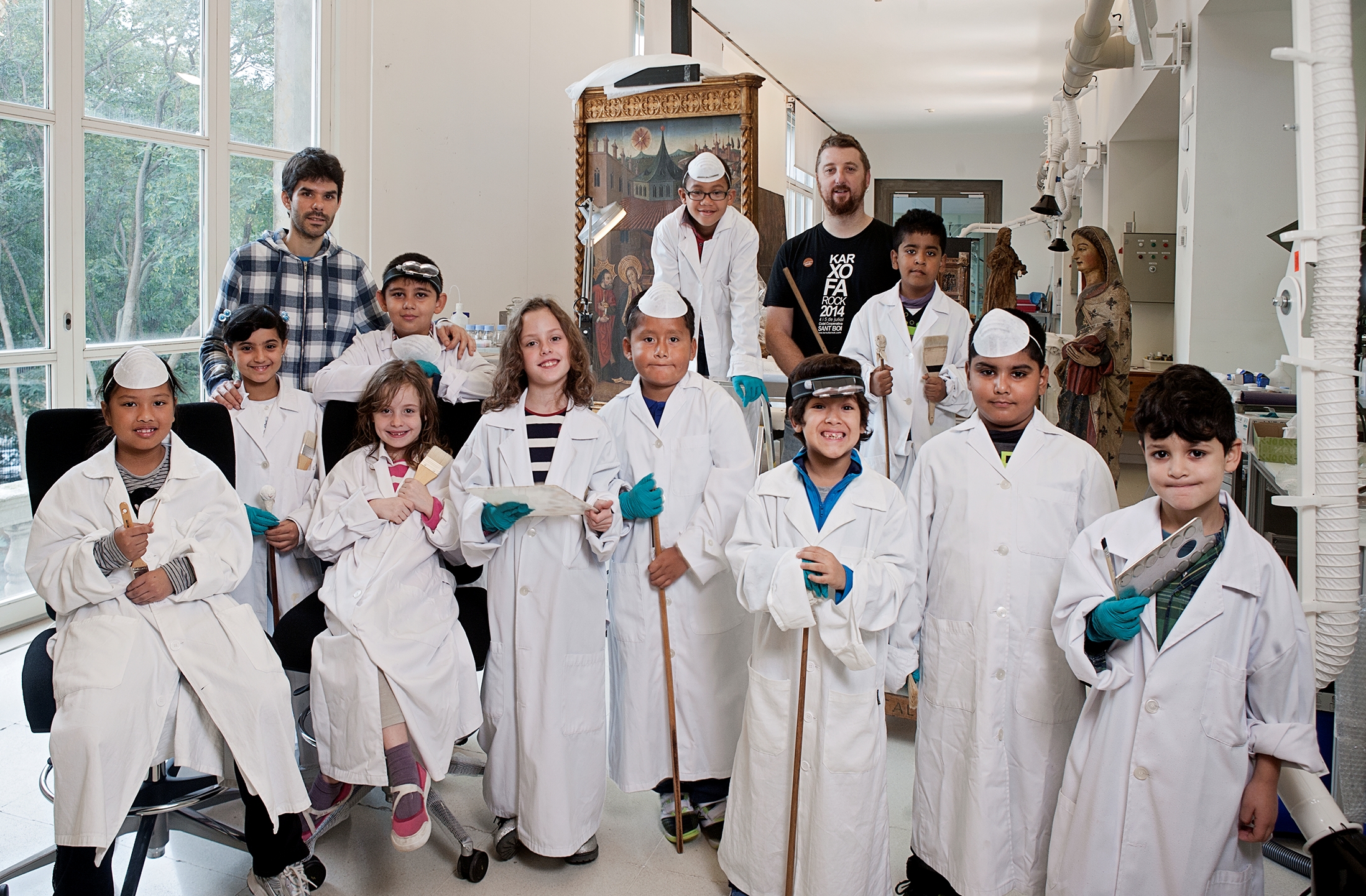Teresa González
Summarising or highlighting the programme aimed at schooling centres without falling into educational marketing is not easy. Art as a tool for perceiving the world, the artistic creation, that bursts in the classrooms and shakes the teaching practices, and the community building are some of the objectives that form the background for the educational programmes of the Museu Nacional. Here we will present some proposals that invite you, to whoever and depending on the time you have available, to get close to the museum by means of a kaleidoscopic look that artistic education allows us to have.
Art as a tool for perceiving the world
Has anyone ever proposed looking at the Modern Art collection from a woman’s point of view or wondered what the role of the artists was during the conflict of the Spanish Civil War? Two new school activities allow us to contemplate the collection from these points of view. Women and Modernism the students discover the role of the woman in the society at the end of the 19th century, at the same time as situating themselves within the artistic context of that moment.
In the same way that nowadays the artists become aware of their fundamental role with regard to the rejection of all types of conflicts, including war, the artists who had to live the Spanish Civil War took part in very diverse ways. The activity, Art and commitment, responses to the Civil War is a proposal that accompanies the look of the youths in an itinerary that allows them to discover the multiple responses of the artists to the conflict: fighting on the frontline, exile, the commitment towards the propaganda or the need to escape from such a difficult reality. And it also puts forward a reflection and the boosting of dialogue based around the idea of justice, commitment, and peace.
The commitment towards the territory
The proposals which make up the educational programme take on even greater strength if furthermore they are linked to the territory and this is what will happen with an activity that from this year on will be carried out in the Museu Cau Ferrat de Sitges. Here we are talking about The blue hour. Getting to know Santiago Rusiñol. Sitges and el Cau Ferrat will allow us to live the figure of Santiago Rusiñol, to take a tour along his streets and to take an in-depth look at what was his house and home so as to get to know the collection and to discover the character, the artist and the writer. The activity approaches the character to the schools to make it their own.
The creation process in the classroom
From an artist, Santiago Rusiñol, who we know thanks to his patrimonial legacy, to an active and internationally renowned artist, Andrea Michaelsson (BTOY), who during this academic course will develop a process of creation alongside the students of an institute of Barcelona. We are talking here about the programme Creators in residence which in this third edition, in which we are mediators, counts on the participation of the mural painter BTOY, who will work together with students from the Third secondary school course of ESO from the Institut Domènec i Montaner. The creative process will be developed throughout the course and will be presented in public during the month of May 2016.
The dialogue on learning between the school and the museum
The educational programme is also extended in time and creates a community: a community of students, teachers and creators; a community of students, the teaching staff, the families and the cultural institution. This last one was born from the project Escoles Tàndem. It is the third year that the museum and the Escola Miquel Bleach have been highly involved in networking together and in actions that go beyond the more commercial concept of productivity and consumption of the educational work, and pass on to prioritising paused time, the development of complicities and shared synergies. In this sense, following the goals agreed with the school, these years of work and dialogue have served to make methodological and structural changes in the teaching practices. The carrying out of project work based on art, that this year focuses on the research of L’esport i els jocs olímpics (Sport and the Olympic Games), and the implementation of the strategies of visual thought are the ones most worth highlighting.
From networking to shared knowledge
Community, networking, working groups that facilitate the development of shared knowledge and help to relate experiences. This course, the Institute of Education Sciences of the Autonomous University of Barcelona proposes, to six art museums of the city of Barcelona, among which ours is included, developing a programme of training workshops on the net: Art, museus i escola. Creació i coneixement (Art, museums and school. Creation and knowledge), which will start in February 2016.
Furthermore, we are holding conversations with the Xarxa de recursos sobre educació per la pau, el desenvolupament i la interculturalitat Edualter (Network of resources about education for peace, development and intercultural behaviour of Edualter) so as to agree the work to be carried out in the design of the activity Art and commitment. We would like to start possible collaborations that take into account the heritage of the museum as a didactic and training resource for the development of the skills of the Education for Development.
All of this is the educational programme, but it is much more than this: emotion, complicity, awakening, commitment, criticism…
Related Links
What’s an artist like you doing in a school like this?
Educating through the arts. The challenge of the Tandem between the Escola Miquel Bleach and the Museu Nacional d’Art de Catalunya
Departament d’Accessibilitat i Inclusió











